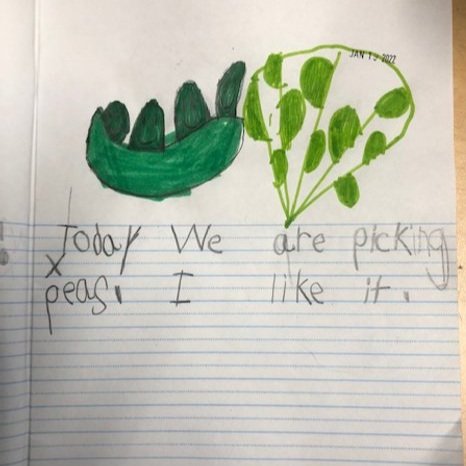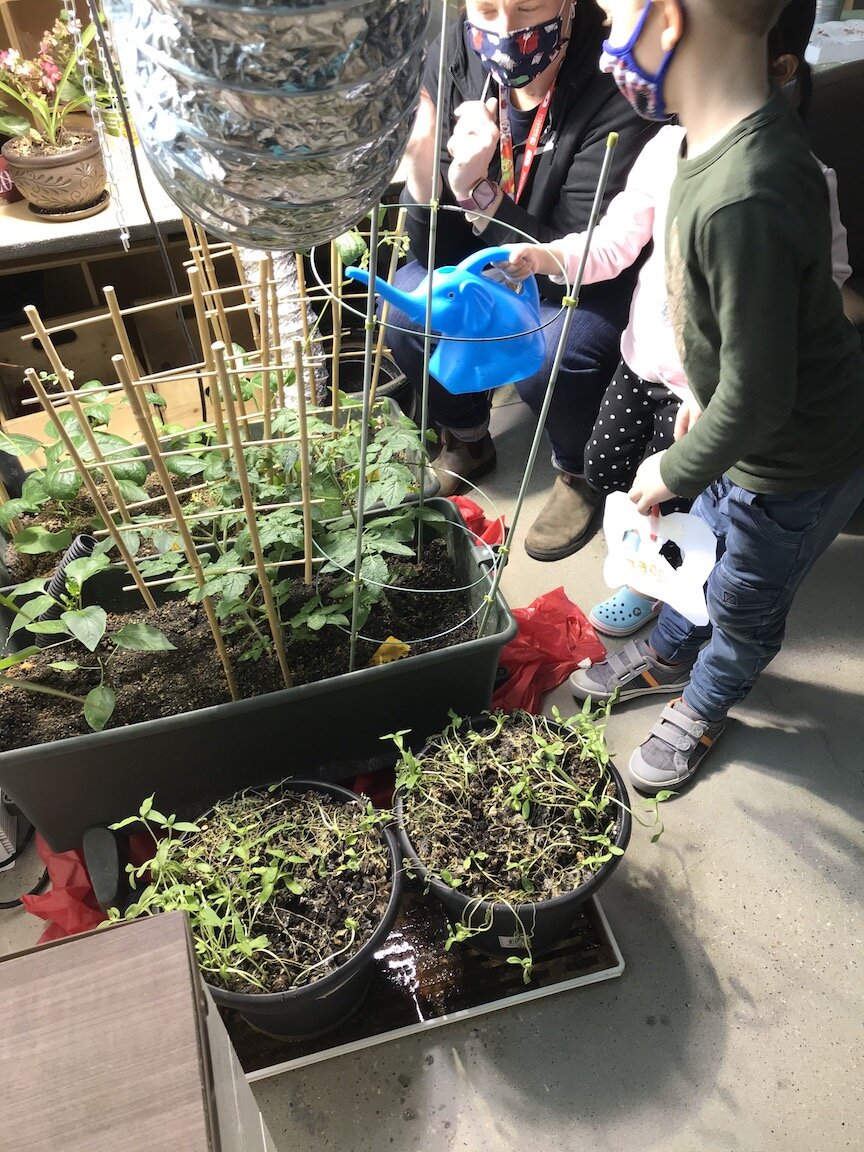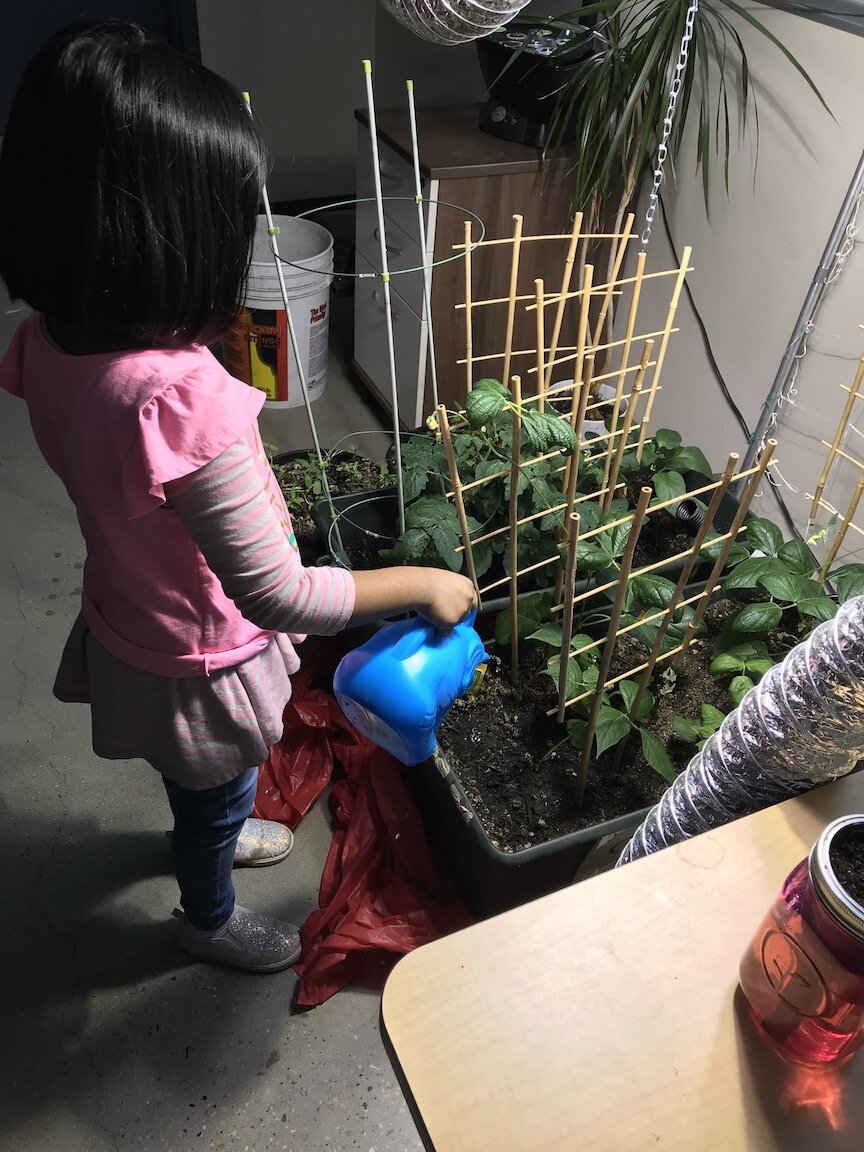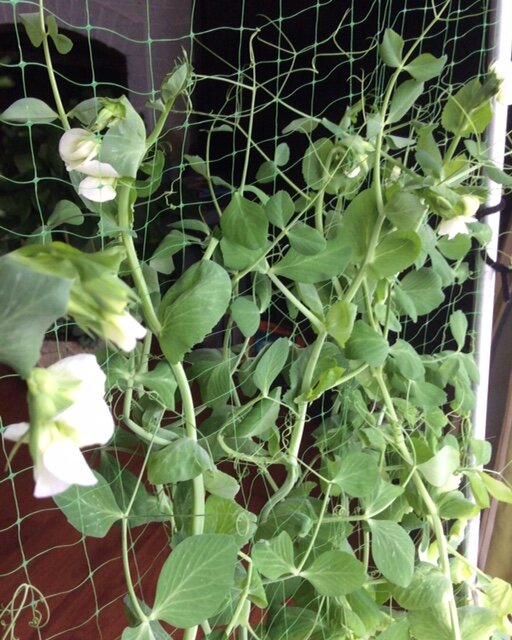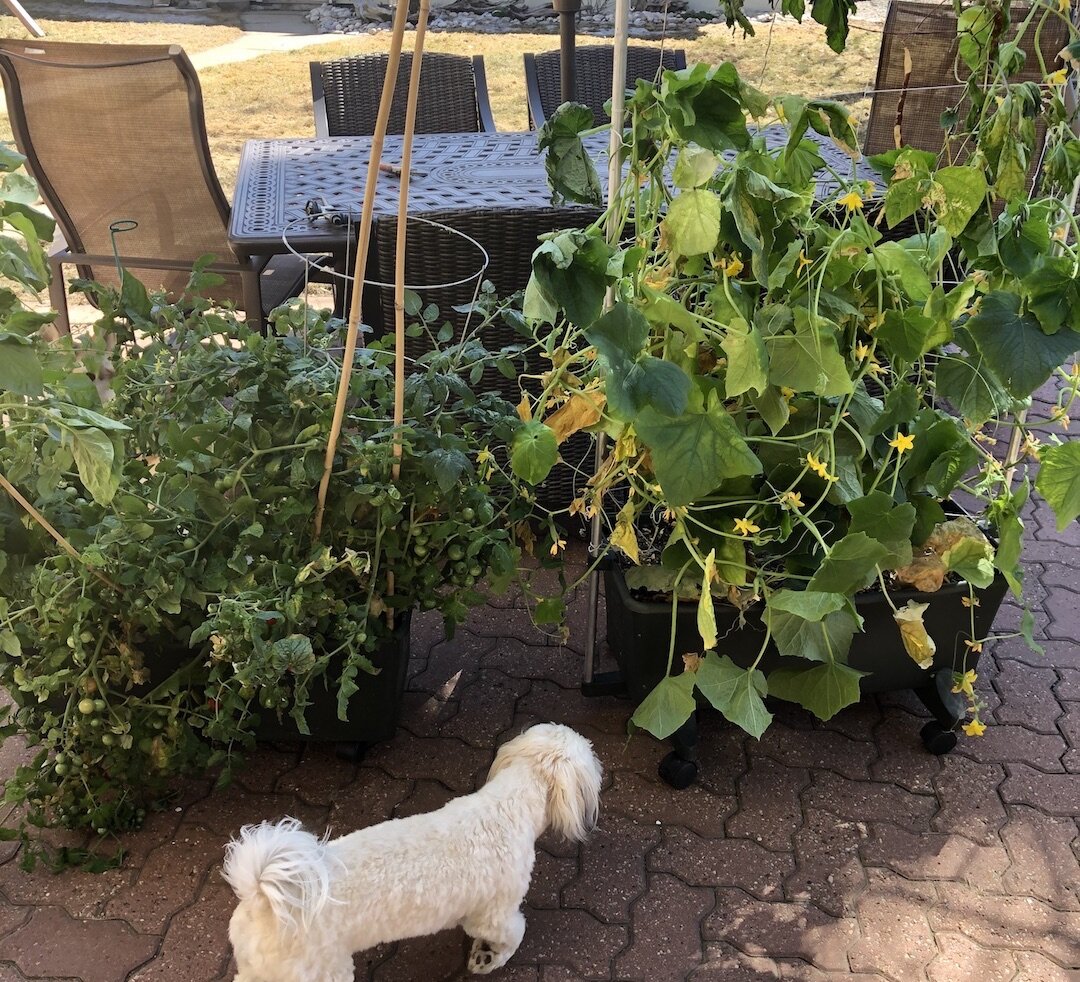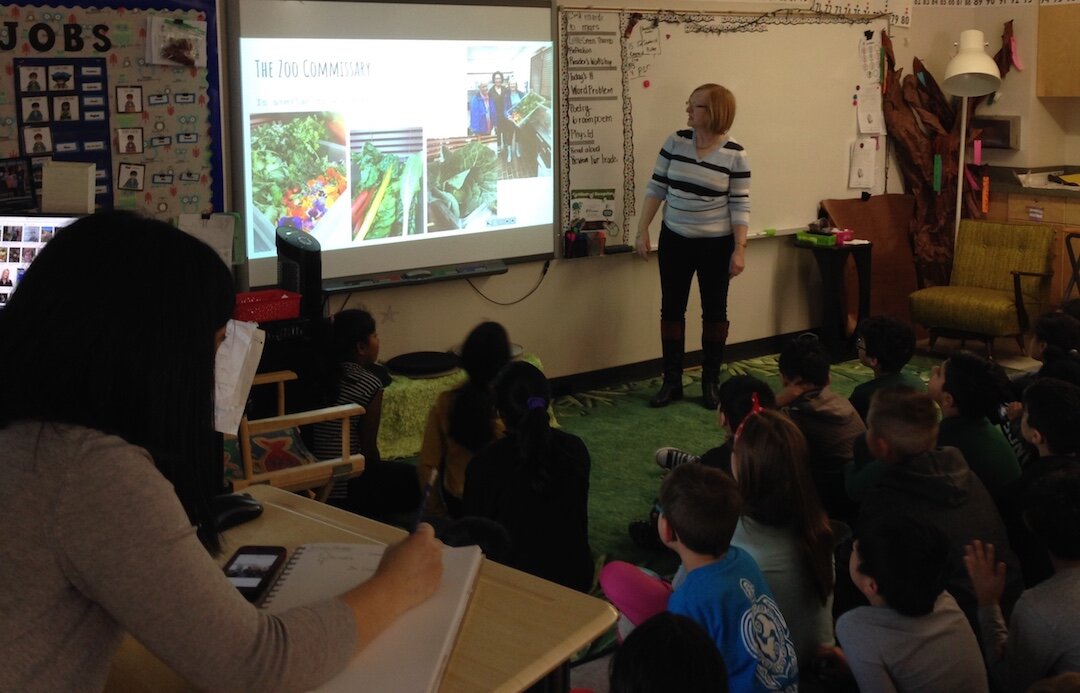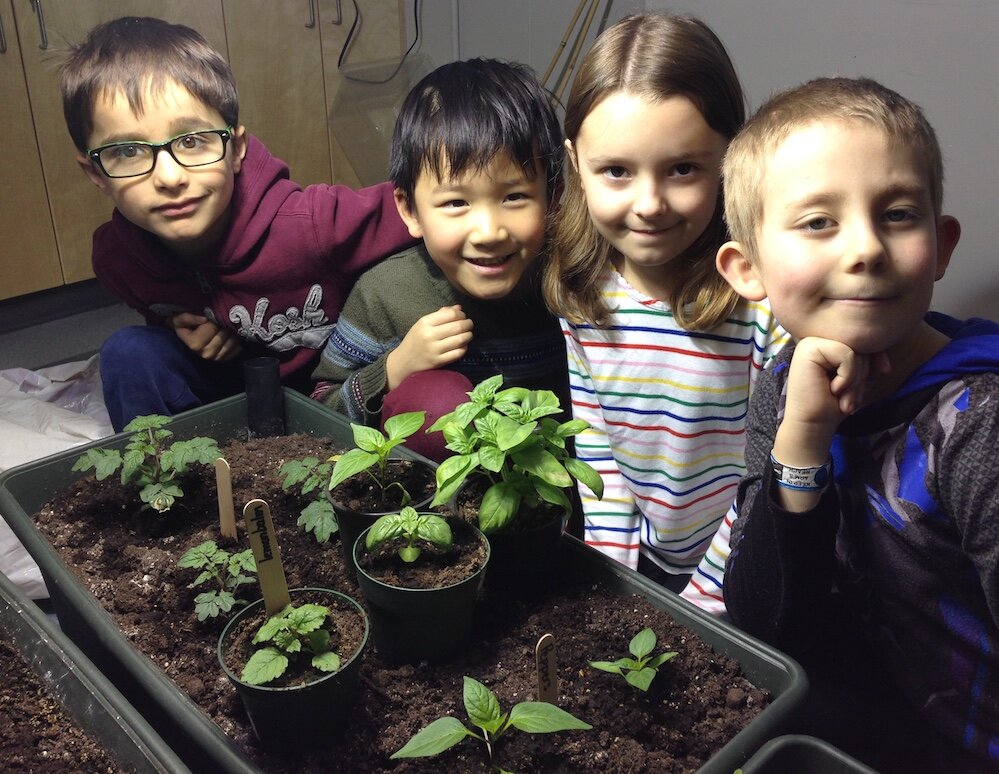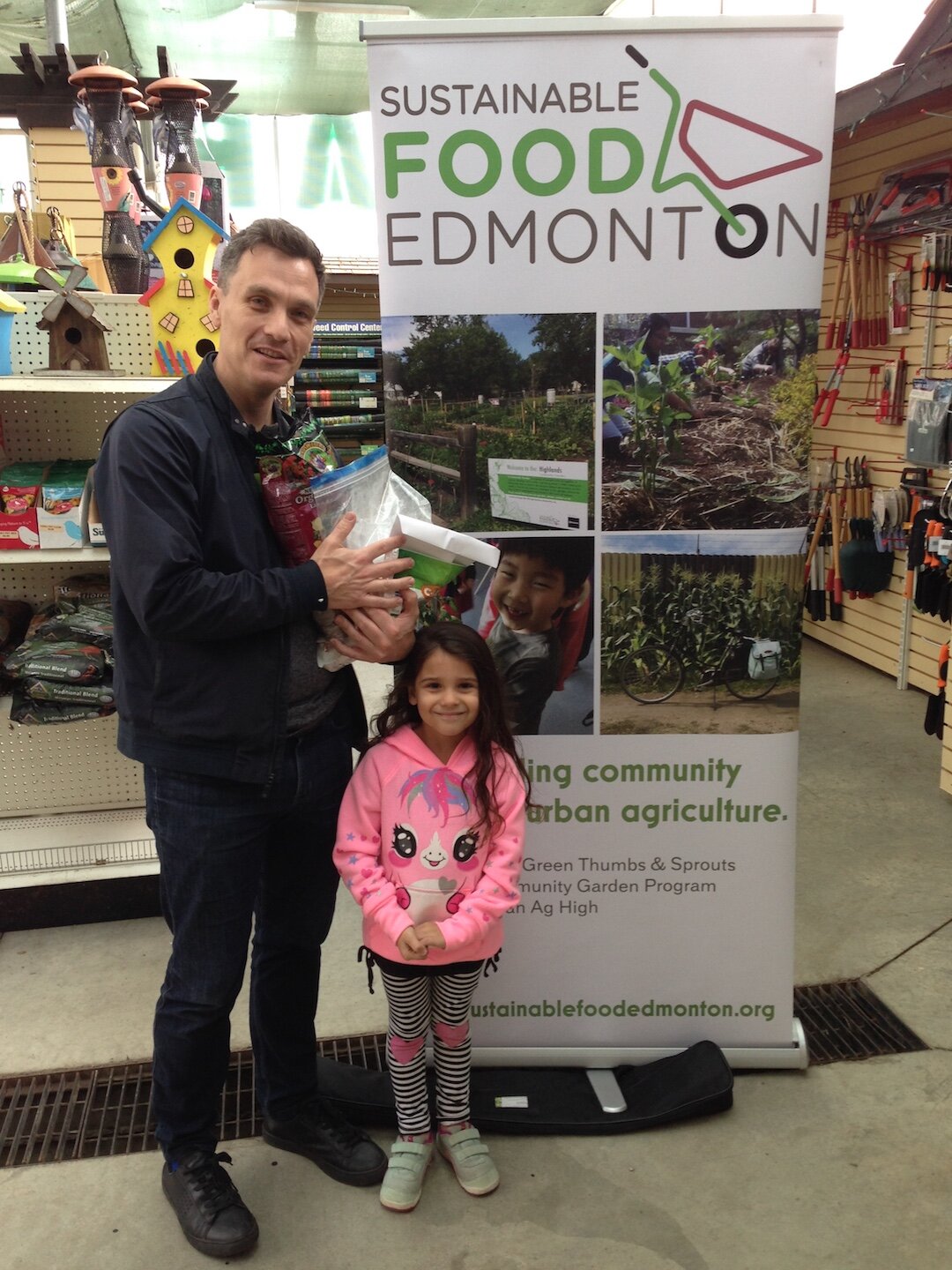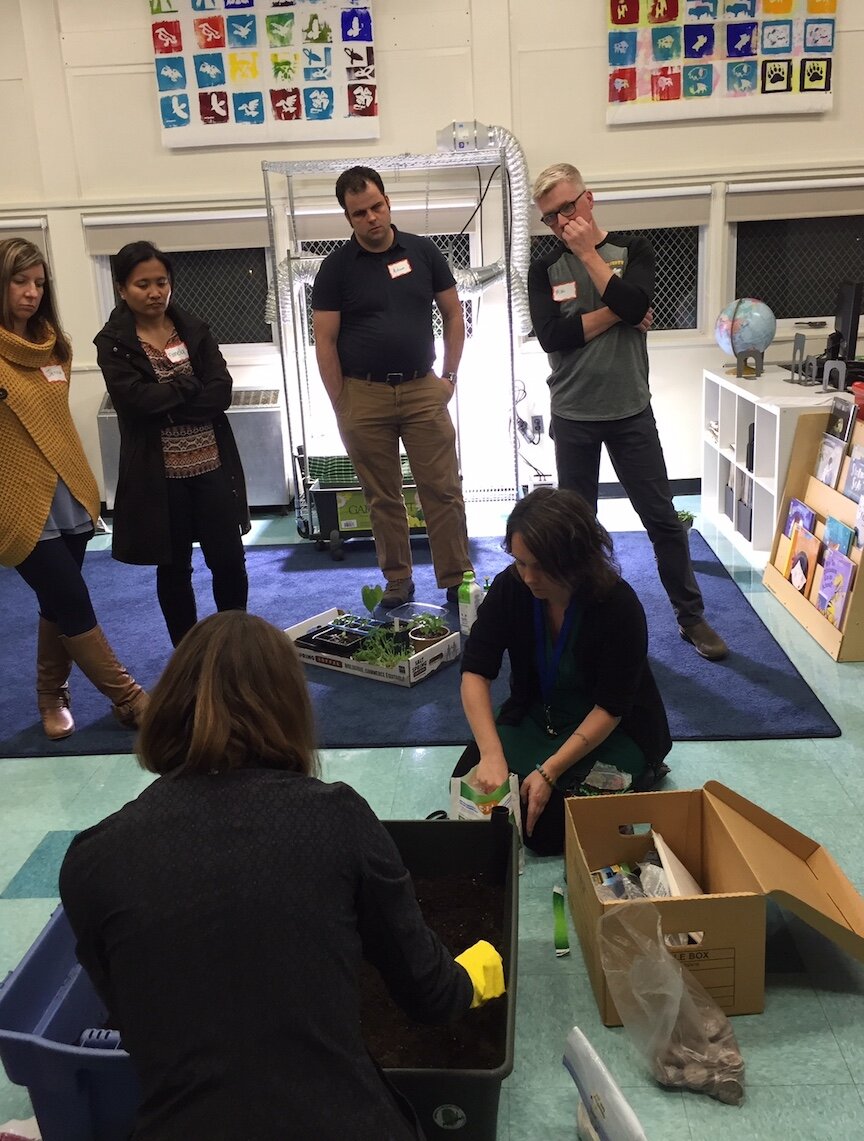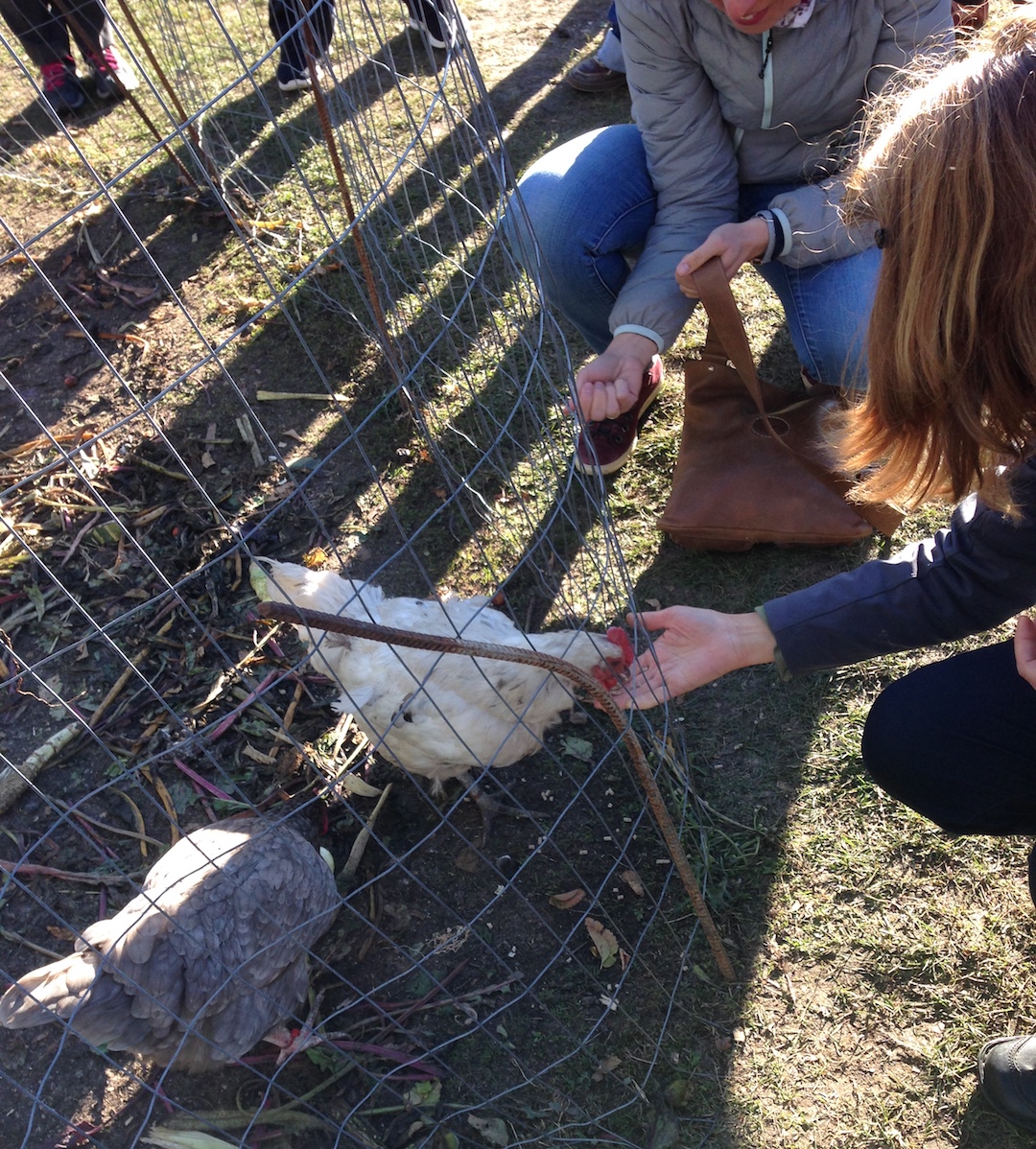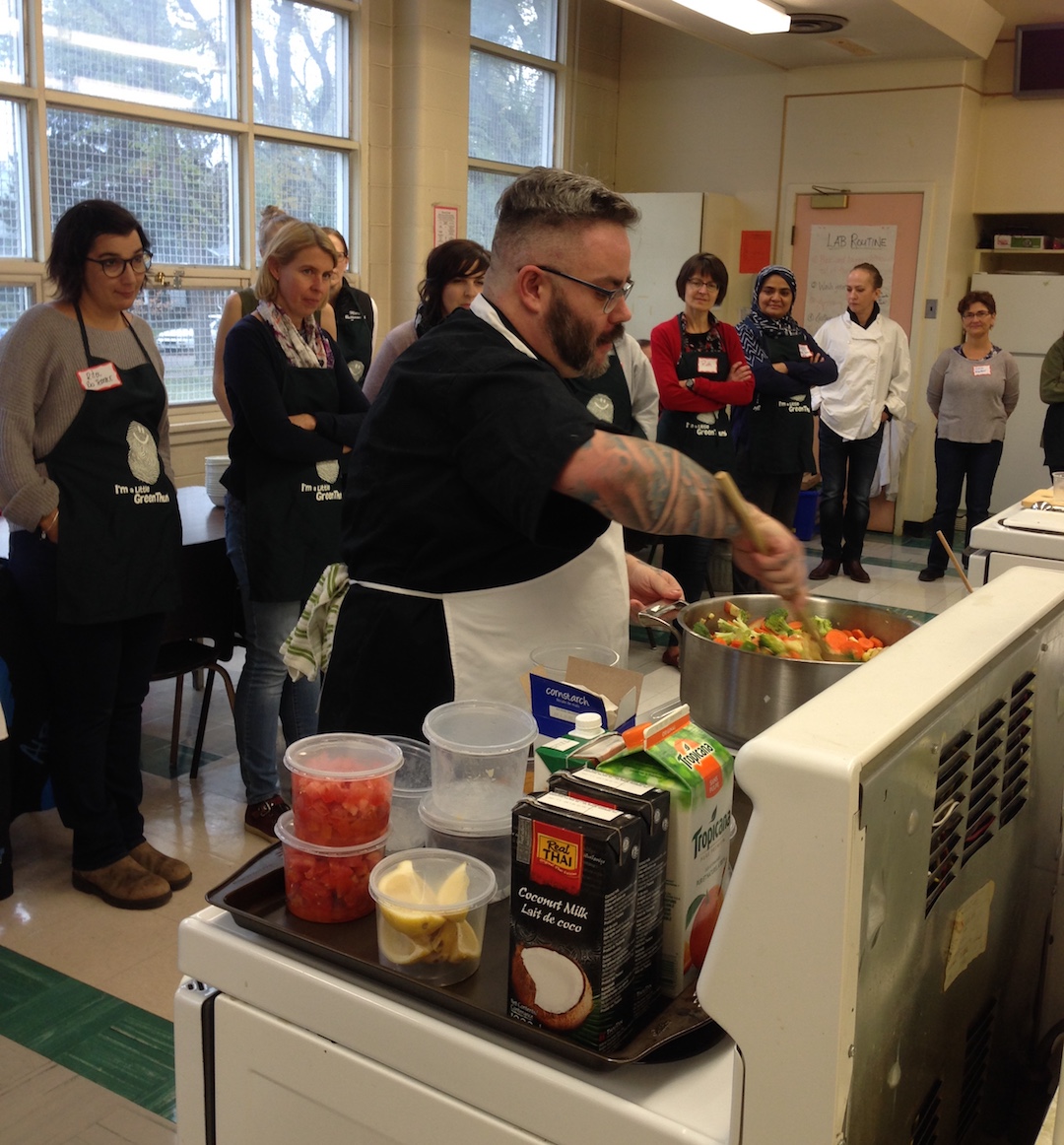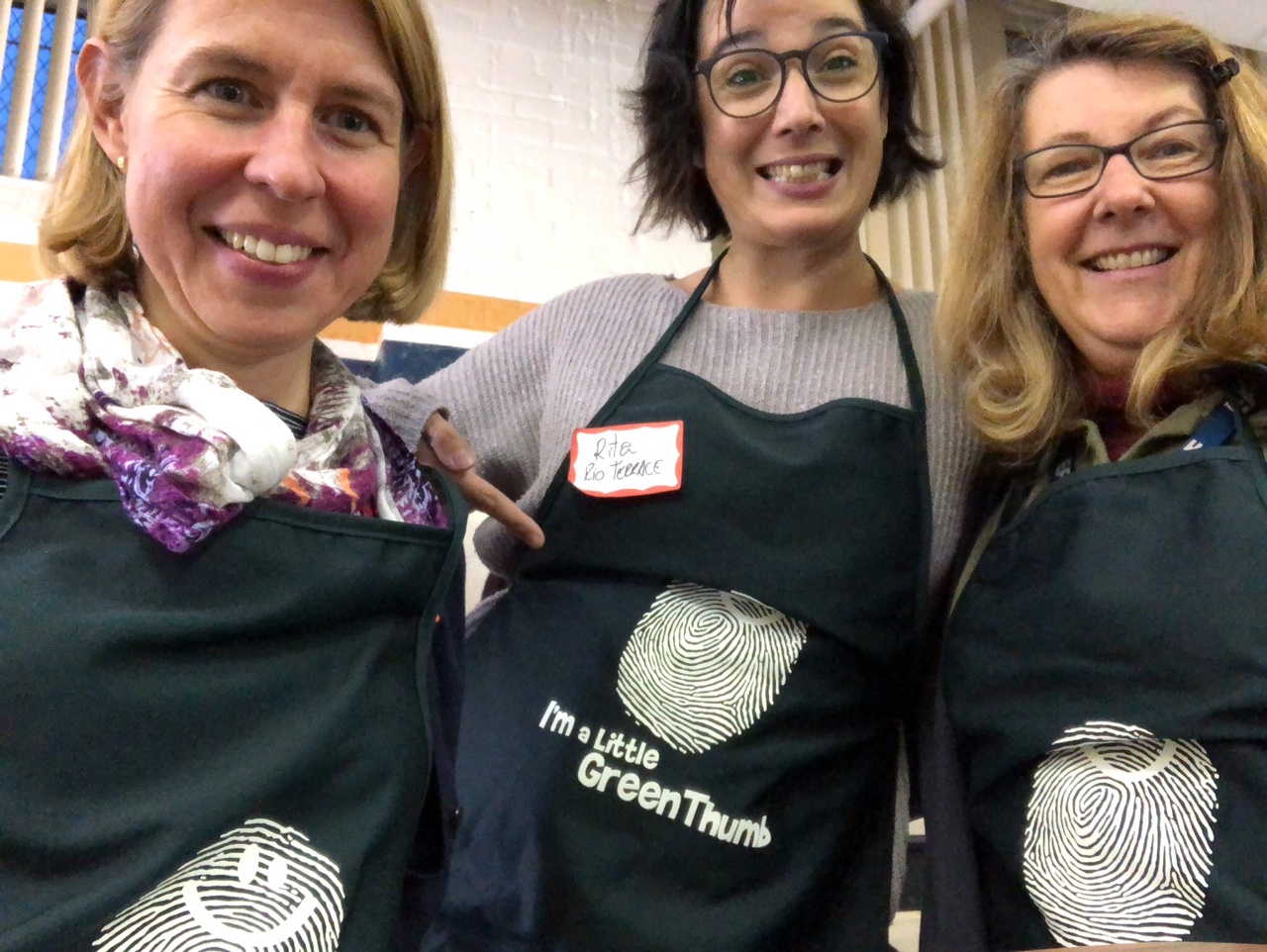We are so pleased to share this story submitted by a student in our Little Green Thumbs Program.
PART 1: INTRODUCTION
Slowly crawling around the clear glass walls, a septet of gastropods make their home in a classroom tank. Peering eyes follow these curious creatures, watching as they create an elongated trail of slime. While this wondrously slimy but clean escargatoire (a group of snails) ooze on by, I will take a moment to introduce myself:
Hello! I am a student of Mrs. McCormick, a grade five teacher, and I am interested in exploring the outdoors and writing. In our classroom, so wondrously inspired by plants, we have a tank of snails. Mrs. McCormick inherited these snails from our principal Ms.Schmitz‘s children.The snails greatly enjoy Mrs. McCormick’s recreation of a mysterious clearing in which they reside, which includes a bridge, a rocky turret, a sleeping log, food bowls and snail eggs! Mrs. McCormick lets us feed our snails every couple of days with our very own amazing homegrown lettuce.
On that topic, let me discuss our garden. In the fall, Mrs. McCorrmick got multiple bags of soil, several large containers, and seeds from Little Green Thumbs. She brought them in, and our class collectively participated in planting seeds. When we got home the next day, sprouts had gathered! We had a special light to assist us, but after the first weekend, we got a wonderful surprise. The plants had grown three inches in six days. Now, we have plants in our garden three times that size, and us and the snails like to enjoy a healthy snack every once and awhile. We have lettuce, pole beans, snap peas and a surprising amount of potted plants. Every couple of days we take lettuce and put it in the snail’s food bowl, along with fresh water. We spray the snails with water to create dry scales or dehydration, a big NO!
My experiences with the snails and our garden have been so great that I wrote this piece to encourage you to follow in our footsteps.
PART 2: WHY SNAILS DESERVE OUR APPRECIATION AND FRESH FOOD
SNAILS ARE GREAT PETS BECAUSE:
They are perfect class pets because of their serene silence, small needs, and toothless jaws. They are incredibly easy to pick up after, and are eco-friendly because they do not create large amounts of waste and only eat plants. Learning about a species is very interesting to observe, and the snails even have lain eggs!
WHY THEY DESERVE TO BE TREATED WITH FRESH LETTUCE
When our class took on the responsibility of these pets, we were taking them under our protection. It’s not as though we can take them out in the winter – they’ll die! – and if we let them starve, it would be just as bad because we would need to feed them and provide them with nutrition. Our teacher really cares about plants and has always wanted a classroom garden; the kids in our class have also asked for a classroom pet. We need to provide the snails with food (water is provided due to our sink) and at a low price. We grow the food in our classroom and kill two birds with one stone! This strategy helps the snails grow a family and expand their lifetime, it achieves Mrs. McCormick’s goal, and the cost is almost nothing. Thus, by giving snails lettuce from our garden it provided healthy food for them, it was not very pricey, it was from a local source- plus, it proved educational because we learned about such a fascinating species.
PART 4: CONCLUSION
If you are a person or teacher who is constantly bombarded with demands to have a classroom pet or want a quiet classroom pet, you may want to try out snails. They are gentle, shy, and worthy of lettuce just as much as your newborn child or cute pet puppy is worthy of food. They are living, therefore worthy of nourishment. Our lettuce is fresh, free of mold, chemicals, or unhelpful bacteria and also incredibly delicious.The lettuce is tall and strong (and delicious), and I enjoy eating it. I believe that other kids like me would like having snails and lettuce because they are so fascinating and sweet (no pun intended) and perfect for any kids without pets to enjoy free food and new pets with no cost.
Thank you, Little Green Thumbs, for letting me write about this experience, and I now shrink into the shadows, as the piece of lettuce is eaten in my mouth.
Elijah Patterson, Grade 5 student at Avonmore, he/him


















